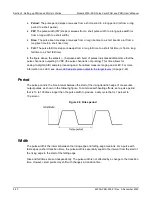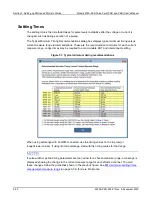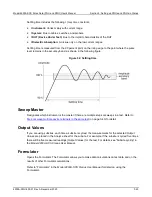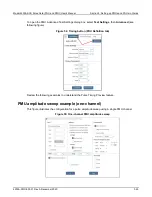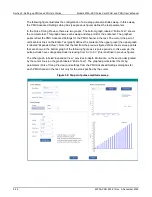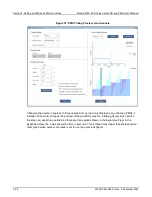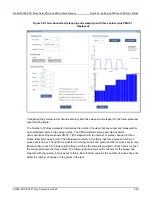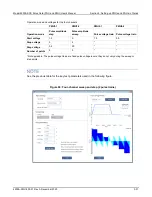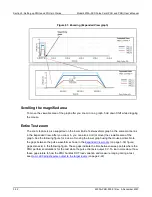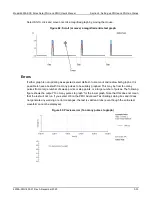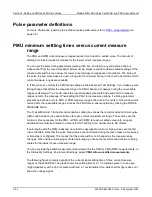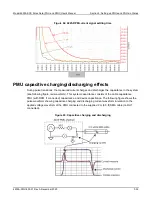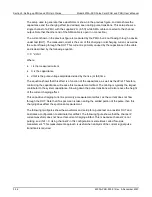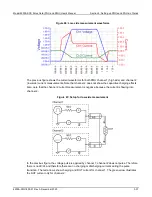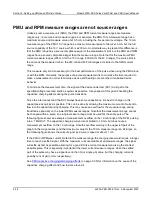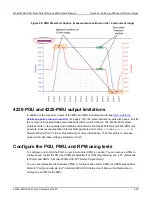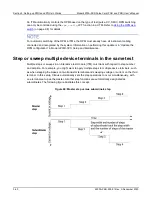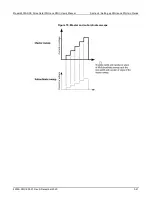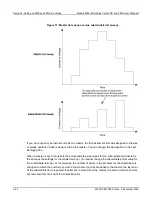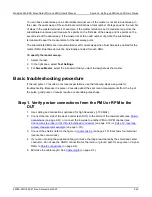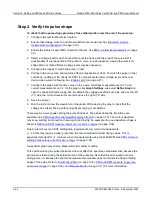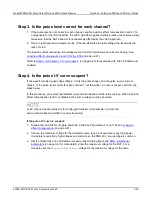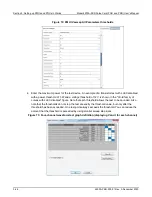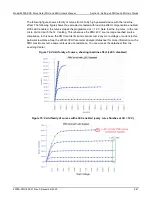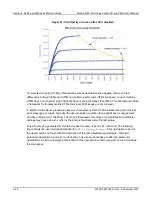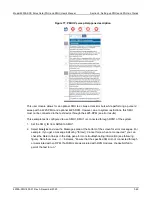
Section 3: Setting up PMUs and PGUs in Clarius
Model 4200A-SCS Pulse Card (PGU and PMU) User's Manual
3-34
4200A-PMU-900-01 Rev. A December 2020
Pulse parameter definitions
For more information regarding the individual pulse parameters, refer to
page 3-6).
PMU minimum settling times versus current measure
range
The PMU and RPM current measure ranges require time to reach a settled value. The amount of
settling time that is required increases for the lower current measure ranges.
You can set the pulse timing parameters (pulse width, rise, and fall) to any valid values and are
independent from the recommended minimum timing values required to obtain settled readings. If the
chosen pulse width is too narrow, the lower current measure ranges are not available. The timing of
the pulse top and pulse base are used, along with the minimum timing in the chart to determine which
current measure ranges are available.
In ITMs, when you modify the PMU timing settings in the Advanced Test Settings, if you make a pulse
timing change that affects the measure range of a PMU channel, a message noting the unavailable
ranges is displayed. You should check the recommended pulse width and period for the measure
ranges noted in the message. When setting the PMU force measure options, if a timing parameter
prevents use of one or more PMU or RPM measure ranges, the note in the center of the window turns
red and lists the unavailable ranges. Access the PMU force measure options by clicking the FORCE
MEASURE button.
The Typical Minimum Timing Recommendations dialog box shows the recommended minimum pulse
widths and transition (rise and fall) times for each current measurement range. These times are the
minimum time necessary for the PMU, or PMU with RPM, to reach a settled value (into an open).
Additional time must be entered to account for DUT settling time, usually due to RC effects.
If autoranging with the RPM is desired, note that the appropriate minimum timing values are the first
row in the table. Note that the pulse timing values are not altered during the test, unless a time sweep
or time step is configured. This means that the pulse width is not changed as the measure range
changes. When using autoranging or limited autoranging, choose the recommended minimum timing
values for the lowest chosen measure range.
You can override the settled measurement requirement for the PMU or PMU+RPM measurements. In
the Clarius My Settings, Environment Settings, select
PMU: Allow unsettled measurements
.
The following figure contains a graph of the current signal settling time of three current measure
ranges of the 4225-RPM. The graph shows the settling time of a 1 V amplitude pulse in to an open
(high impedance) with a 300 ms pulse width and a 1 ms transition time. Note that this figure does not
show the voltage signal.

